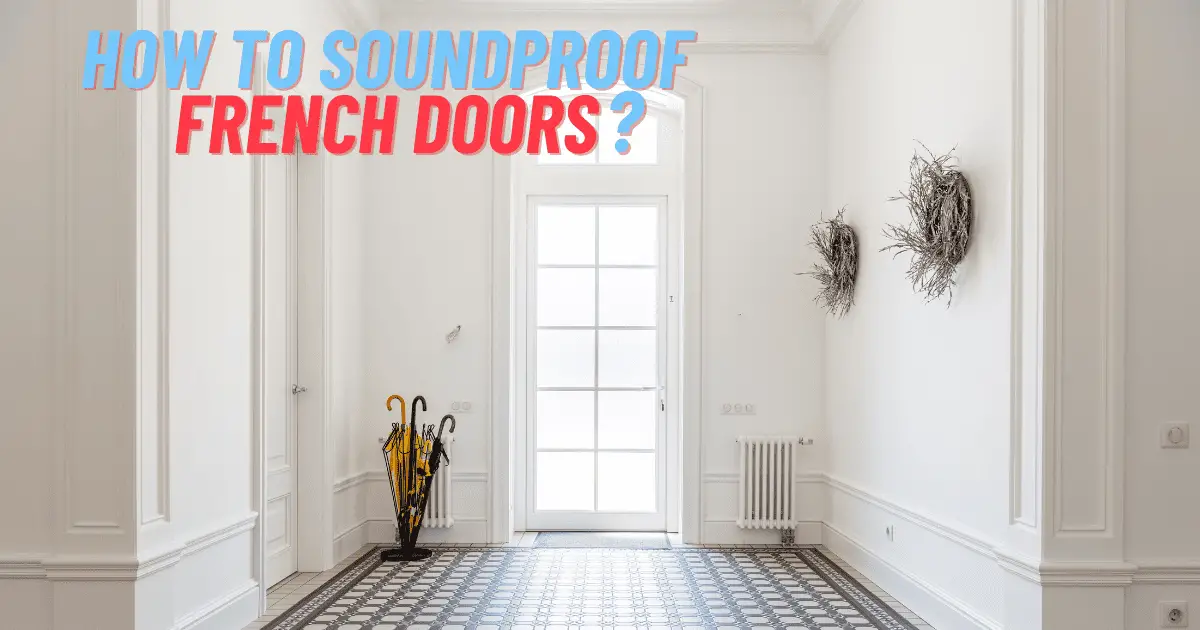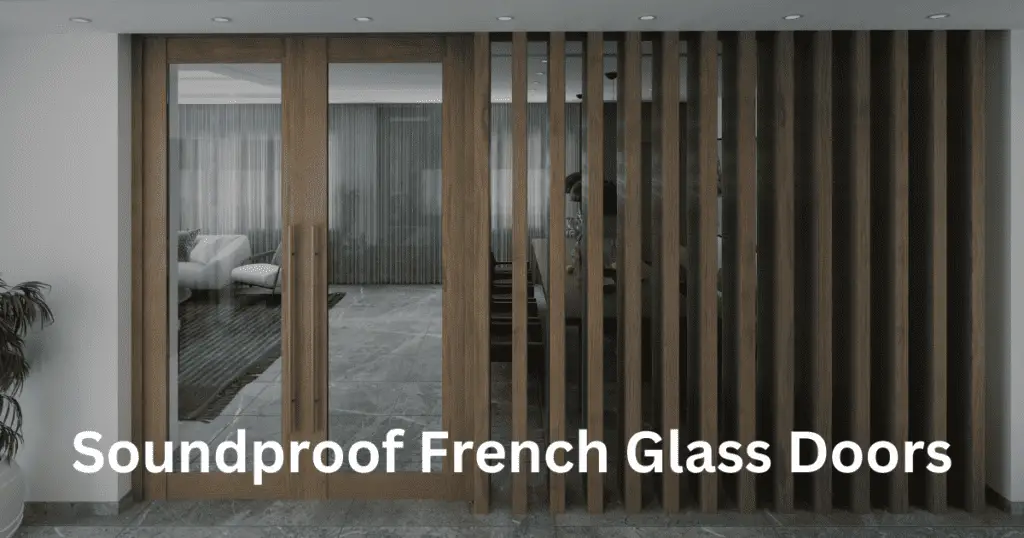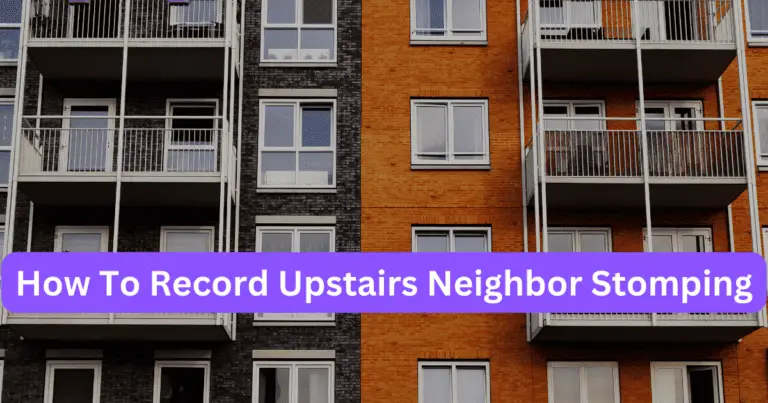How to Soundproof French Doors: 8 Tips and Tricks

Do you get tired of the noise coming, from your French doors? If so, you might want to consider soundproof French doors.
Any house is enhanced by the beauty and classy look of French doors, which let in loads of natural light and seamlessly link interior and outdoor areas.
However, noise intrusion frequently compromises their exquisite design. Soundproofing your French doors may substantially improve your living space if you frequently get bothered by outside noises.
Soundproofing becomes necessary to preserve a calm internal environment, whether it’s due to street traffic, neighborhood activities, or just unwelcome sounds from the outside.
We’ll walk you through the most efficient methods and tactics for soundproofing your French doors in this guide, providing a quieter and more peaceful living environment.
So, Let’s get started.
What you need to know before soundproofing French doors
It’s important to comprehend why French doors are particularly susceptible to sound leakage before getting into soundproofing methods.
French doors, which differ from conventional doors in having big glass panels and many panels, can leave gaps and weak spots that allow sound waves to readily travel through.
Additionally, the doors’ construction materials, such as wood or metal, can not offer sufficient soundproofing.
Assess the Noise Problem
It’s critical to comprehend the precise noise problems you’re experiencing before looking into soundproofing options.
Is there outside noise, such as from neighbors, traffic, or construction? Or is it a result of noises made within your house, such as those made by noisy equipment or a busy household?
Determining the noise’s source can assist you choose the French doors’ soundproofing techniques that work best.
If you want to know more about Soundproofing then READ MORE
Which type of French door is better in-swing or out-swing?
Depending on the available space and the desired aesthetic, you can choose between in-swing and out-swing French doors.
In-swing French doors may give off a more classic style and feel, but they often occupy more room when they are open.
However, because they don’t need extra clearance room when opened, out-swing French doors are frequently more space-efficient.
French doors with an outward swing can also give off a more modern vibe.
It’s crucial to examine the general architecture of the space and how you’d want to approach the room or area when deciding between in-swing and out-swing French doors.
An out-swinging French door, for instance, can be the best option if you want a room to seem spacious and bright.
The door will open away from the room, allowing more light to enter, so you won’t have to worry, about it taking up too much space while opening.
On the other hand, an in-swing French door can be the best option if you’re going for a more conventional appearance.
This style of door opens into the space, giving it a more traditional appearance. The decision between an in-swing or out-swing French door ultimately comes down to taste and the layout of the room.
Whichever door you select, you can be sure it will give your house a sense of elegance.
Set up double-glazing glass
Consider replacing the old glass panels with double-glazing or laminated glass if you’re ready to spend extra on soundproofing. These glass varieties offer improved sound insulation, greatly lowering noise intrusion.
The double-paned glass serves as a soundproofing barrier and adds additional thermal insulation.
Additionally, this style of door features air-filled spaces between the two glass panes, which lessens noise transmission even more.
Furthermore, the door’s heavy-duty metal frame contributes to sound absorption.
A different option is to employ soundproofing material to lessen sound transmission. This may be put in place on the windows, doors, floors, ceilings, and walls.
To guarantee correct installation and the best soundproofing results, consult an expert.
How sound enters through closed French doors?
French doors may still let sound in through a variety of openings and gaps even when they are closed. Effective soundproofing of closed French doors requires an understanding of how sound enters them. Consider the following important factors:
Airborne Noise: Through tiny cracks or spaces around door edges, sound waves can enter your home and enter the room. Sound can pass through even a small gap or an area that isn’t well sealed.

- Leaks and Gaps: French doors may have construction flaws or gaps that are intrinsic to the design. Especially if the doors are not placed correctly or if the frames have moved over time, these spaces may allow sound to get through. According to a study, closing just 1% of surface gaps can reduce outside noise by up to 10%.
- Door Material and Thickness: The doors’ materials and thicknesses can affect how well they transmit sound. Compared to heavier, more substantial doors, thin or light doors may shake more easily, enabling sound waves to flow through more quickly.
- Glass Panels: French door glass panels are especially susceptible to sound penetration. Glass is a hard surface that can cause vibrations to be transmitted and allow sound to enter your area. Particularly with single-pane glass, little sound shielding is provided.
- Sealing Deficiencies: Defects in the seal surrounding the door frame, such as inadequate weatherstripping or worn-out seals, can allow sound to enter. The seals’ ability to efficiently filter out noise may be compromised if they are broken or improperly placed.
Addressing these potential entrance sites is crucial to reducing sound transmission through closed French doors.
Reduce sound ingress by adopting soundproofing strategies including weatherstripping and door sweeps, updating door materials, adding double-glazed or laminated glass, and caulking gaps.
You may make your home more tranquil by recognizing and reducing these elements. Always keep in mind that the finest results will come from a thorough soundproofing strategy that includes several methods.
To reduce sound transmission and create a more tranquil environment, each component is essential.
How can noise between rooms be reduced?
There are numerous methods for reducing room-to-room noise. Utilizing soundproofing components like insulation, acoustic panels, thicker and denser carpets, and padding is the most efficient.
These substances absorb sound, which lowers noise. To further lessen sound transmission, an acoustic sealant can be placed on the door and window frames.
Installing double-paned windows, which are reputed to offer effective noise suppression, may be worthwhile depending on the severity of the noise problem.
Finally, moving furniture around or adding rugs and drapes can also assist muffle noise.
Keep in mind to soundproof the air vents.
It’s crucial to employ the proper tools and methods when soundproofing air vents.
The kind of material you’ll choose to cover the vents should be your priority.
For instance, insulation can assist lessen the quantity of sound that enters vents while acoustic foam or acoustic blankets are excellent for absorbing sound.
you further stop sound from escaping, be sure you cover all crevices and holes using a soundproof sealer. To further cut down on sound transmission, you want to think about utilizing sound-dampening baffles.
Last but not least, bind the materials to the vents using sound clips or clamps. The quantity of sound that enters your home may be decreased by successfully soundproofing your air vents in a short amount of time by following these instructions.

How to Soundproof French Doors: 6 Methods for Interior and Exterior Protection
To achieve the best results with your French door soundproofing project, consider the following step:
1. Add soundproof weather stripping to the frame.
To reduce sound transmission through gaps in your French doors, weatherstripping is a practical and affordable solution. Noise leakage can be considerably reduced by sealing the door’s perimeter.
Pick weatherstripping materials of the highest caliber, such as rubber, silicone, or foam tape with an adhesive backing. Apply weatherstripping to the door and the door frame to make sure there is a tight seal.

2. Seal all cracks and gaps
Your French doors need to have any gaps or cracks filled if you want to effectively block out noise.
A particular sealant used to prevent sound transmission is called acoustic caulk. Apply the caulk carefully, paying special attention to any potential air or sound leaks, around the door frame.
For best results, be sure to remove any old caulk before using the acoustic version. Keep in mind to pick a caulk that is both flexible and weatherproof.

3. At the bottom of the door, add a door sweep.
The key components in soundproofing your French doors are door sweeps or threshold seals.
The bottom of the door has these weather-resistant strips fitted to close gaps and stop sound from leaking through. Make sure the door sweep you choose will fit snugly by making sure it is the same width as your French doors.
A versatile and long-lasting solution is provided by door sweeps, which come in a variety of materials, including rubber and silicone.

4. Hang a curtain to block out sounds.
Installing soundproofing curtains is another efficient method for soundproofing your French doors.
The strong, noise-absorbing materials used to construct these specifically created curtains help muffle outside noise and keep it from seeping into your living area.
For better sound insulation, use drapes made of thick materials and many layers. For optimal covering, think about mounting a curtain rod that goes past the door frame.
You should be able to hang a soundproof curtain over your French doors using these instructions.

5. Utilizing Rugs and Heavy Furniture
Heavy pieces of furniture and rugs may be strategically placed next to your French doors to assist absorb sound and lessen the effect it has on your living area. Along the walls near the doors, install bookcases, cabinets, or other large pieces of furniture.
Large area rugs or carpets can also help to lessen sound echoes and reflections. Choose dense, thick carpets to further insulate against noise.
6. Keep handles and hinges lubricated.
It’s simple to minimize noise and enhance the functionality of your doors and windows by lubricating the hinges and knobs.
To start, you’ll need to buy a lubricant made especially for this use. A silicone-based lubricant is one illustration.
After obtaining the lubricant, you must open the door or window and take out the handle screws or hinge pins. Make sure the lubricant is uniformly covered before starting to apply it on the pins or screws.
Replace each pin or screw in the frame, door, or window after it has been greased. Open and shut the door or window a few times to make sure the lubricant is dispersed equally.

7. French door soundproofing tips using moving blankets
The idea behind using curtains and shifting blankets to soundproof French doors is similar. The moving blanket’s thick and dense material functions as a natural sound absorber, significantly lowering the sound waves that are trying to enter your room through the doors. You may further insulate your French doors and reduce noise transfer by draping the moving blanket over them.

8. Replace a double-glazed French door with your existing one.
Consider replacing the old glass panels with double-glazing or laminated glass if you’re ready to spend extra on soundproofing.
These glass varieties offer improved sound insulation, greatly lowering noise intrusion. To guarantee correct installation and the best soundproofing results, consult an expert.
Other Sound Leaks: Solutions
Other possible sound leaks in your home must be fixed to attain the best soundproofing benefits. Check your windows, walls, and flooring for any holes or gaps that can let noise in.
To these places, if necessary, apply the proper sealants, weatherstripping, or soundproofing materials. The finest results come from a thorough approach to soundproofing.
FAQ: A method for soundproofing French doors
The comfort and quiet of your house may be considerably improved by including soundproofing methods in your French door configuration.
You may efficiently reduce noise transmission by evaluating the present degree of soundproofing, putting in place solutions like weatherstripping, soundproofing curtains, acoustic caulk, and panels, and thinking about improvements like soundproof glass.
For thorough soundproofing in your home, don’t forget to caulk cracks, put door sweeps in, and take care of any sound leaks. Enjoy your French doors’ beauty without sacrificing quiet time.
Q1. Does soundproofing work on both sides?
Ans: Yes, soundproofing may be successful on both sides of French doors. French doors generally have glass panes, which may readily let sound through.
However, there are a number of techniques you may take to increase, the soundproofing on both sides of French doors.
Q2. Can you put soundproof foam on the door?
Yes, the soundproof foam may be used to provide sound insulation on French doors.
Foam that is intended to block out sound is known as soundproof foam, often referred to as acoustic foam or sound-absorbing foam. This reduces echo and reverberation.
Q3. Do soundproof foam panels work?
Certain forms of noise may be reduced and absorbed by soundproof foam panels, thus the answer is yes.
The purpose of soundproof foam, also known as acoustic foam or sound-absorbing foam, is to reduce echoes, reverberation, and undesirable reflections inside a space.





